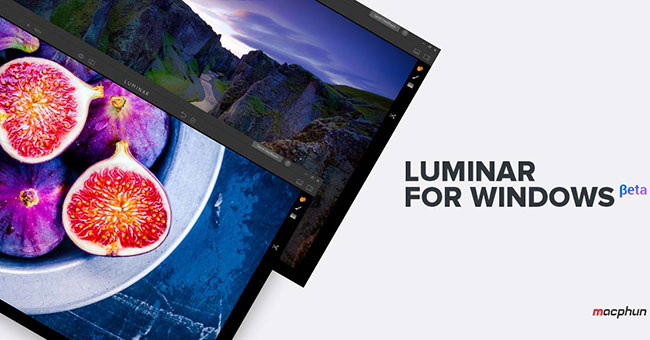Samsung's Tizen OS programmed badly, containing 27,000 bugs?
Tizen is an open-source operating system based on Linux, backed by Intel and Samsung Electronics and in the development process since early 2012. It is designed for mobile phones, tablets, smart TVs, copper. Smart watch, camera and PC.
According to Andrey Karpov, founder of Program Verification Systems, created PVS-Studio (a static code analysis tool that helps programmers find and fix bugs right on the source code), his team discovered hundreds of bugs in the Tizen project by PVS-Studio.
Samsung's Tizen operating system is written in C / C ++ language, currently has 72.5 million lines of source code. Among them, Karpov's team analyzed randomly selected modules, about 3.3% of the entire project and found nearly 900 errors.
'If I extrapolate the results, my team can detect and fix about 27,000 Tizen errors', Karpov said.
In April of this year, Israeli researcher Amihai Neiderman called Tizen the "worst code I've ever seen" after testing the operating system and discovered 40 zero-day vulnerabilities. After finding thousands of Tizen errors, Karpov contacted Samsung to offer to buy PVS-Studio analysis software but Youil Kim from Samsung declined.

According to the evaluation of PVS-Studio, Tizen contains up to 27,000 bugs
According to an exchange email between Karpov and Kim, Samsung used SVACE technology (Security Vulnerabiloties and Critical Errors Detector) to detect vulnerabilities and bugs in the source code. of the application created for Tizen.
'We also know that there are other tools that can find defects. But we don't think Tizen has 27,000 errors. As you know, many static analysis warnings are usually just about making small problems, 'Kim said.
The Tizen operating system currently runs on nearly 30 million smart TVs, Gear brand watches, cameras, home appliances and a number of phones sold in Russia, India and Bangladesh markets.
Sansung also plans to bring 10 million Tizen phones to the market later this year. So if what Karpov says is true - in a way that the Samsung representative also acknowledged - then the company should shift to focus on operating system security issues on Tizen 4.0, which will be released in September. .
You should read it
- Intel launched a new definition of netbooks
- Instructions for installing Spotify on Samsung Smart TV
- Compare 4 current TV operating systems
- Interesting operating systems may be unknown to you
- Samsung awards up to 200,000 USD for those who find its smartphone bugs
- Apple patched 33 bugs in Mac OS X operating system
- Official iOS 8.1.2 for downloading and fixing deleted ringtones
- Intel thinks Windows 8 is not really ready
May be interested
- Suspected SoundCloud closed, many people love music dazed
 information about nearly half of staff cuts and financial difficulties made many suspicious soundcloud about to close.
information about nearly half of staff cuts and financial difficulties made many suspicious soundcloud about to close. - Google replaces the SMS Code with a quick authentication message
 from the beginning of this week, google will review the entire two-step authentication process (2sv) and replace the disposable code sent via sms with a confirmation message displayed on the user's phone.
from the beginning of this week, google will review the entire two-step authentication process (2sv) and replace the disposable code sent via sms with a confirmation message displayed on the user's phone. - 16 most popular, easy-to-find programming languages
 when a company searches for new programming talents, they will look for candidates who are familiar with the languages and systems they are using. learn 16 popular programming languages today to find a satisfactory job.
when a company searches for new programming talents, they will look for candidates who are familiar with the languages and systems they are using. learn 16 popular programming languages today to find a satisfactory job. - Invite to download Luminar beta for Windows - Best Imaging Software 2017 on macOS
 a company specializing in developing ios applications with many users named macphun has just put luminar, 'powerful photo editing software' on windows as beta.
a company specializing in developing ios applications with many users named macphun has just put luminar, 'powerful photo editing software' on windows as beta. - More than 22,000 users unknowingly agreed to clean the toilet because they did not read the terms of the service provider
 more than 22,000 users accidentally agreed to clean the public when they connected to free wifi hotspots in the uk.
more than 22,000 users accidentally agreed to clean the public when they connected to free wifi hotspots in the uk. - Steal encryption key AES256 thanks to PC's electromagnetic emission
 a group of researchers from fox-it and riscure have assembled a device from electronic parts, thereby obtaining a key code that encodes the use of electromagnetic emission (electromagnetic emission) from a nearby computer. .
a group of researchers from fox-it and riscure have assembled a device from electronic parts, thereby obtaining a key code that encodes the use of electromagnetic emission (electromagnetic emission) from a nearby computer. .






 Differences between One UI and Tizen
Differences between One UI and Tizen Samsung celebrates Tizen on Gear over 1000 apps
Samsung celebrates Tizen on Gear over 1000 apps Intel launched a new definition of netbooks
Intel launched a new definition of netbooks Samsung will support 7 years of free software upgrades for AI TVs running the Tizen operating system
Samsung will support 7 years of free software upgrades for AI TVs running the Tizen operating system Why do so many people like to say bad things behind others?
Why do so many people like to say bad things behind others?